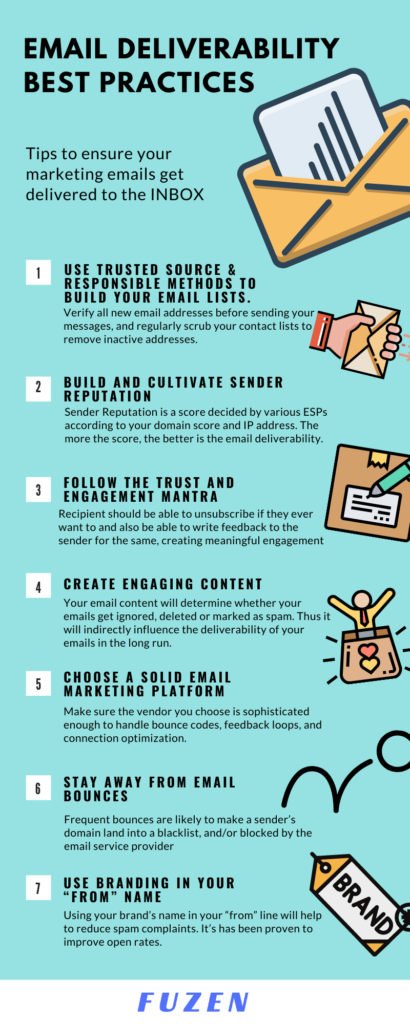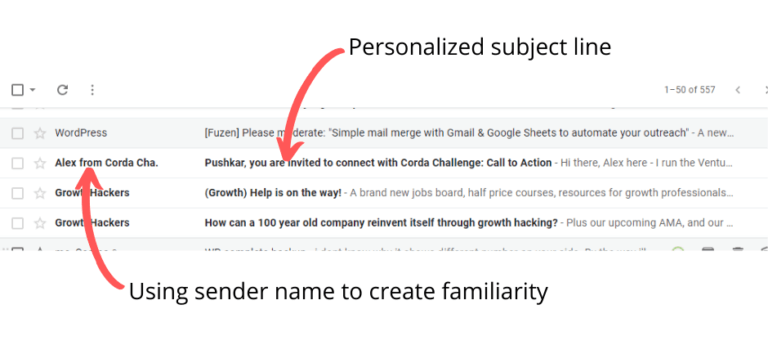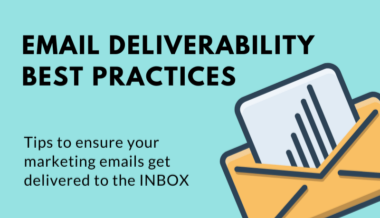Email marketing has been around forever, and only for the best. It’s the most direct, cheap and effective way of connecting with your leads, nurturing them, and turning them into loyal customers, consistently outdoing all other marketing channels.
But a marketing email is useless if it does not get opened or does not even land in inbox. That’s why email deliverability is such an important factor. In this guide, we’ll walk you through the email deliverability best practices so that you can acquire leads and generate sales, 24/7.
By using this definitive guide, you’ll know:
- Why its important to build a clean emailing list.
- How to optimize your emails for the highest open rates and click-through rates (CTR).
- How to automate the process of nurturing your leads and turning prospects into customers.
Sound good? Lets dive in.

1. Use trusted source & responsible methods to build your email lists.
Verify all new email addresses before sending your messages, and regularly scrub your contact lists to remove inactive addresses.
Email addresses of your recipients can often be invalid or expired. Hence it is always suggested verifying the subscriber list with a verification tool. Verified Email list decreases your bounce rate, increases your email deliverability and also your sender reputation score.
Usually, after verifying your recipient’s list through any tool, it segments your recipient’s list into 3 types: Valid, Risky, and Invalid.
Valid: These are the verified contacts and are safe to send.
Risky: These may be existing email addresses, but are not safe to send as those accounts lack engagements.
Invalid: These are the non-existing or expired contacts, and we suggest against sending emails to them. The emails sent to these addresses are known to bounce.
2. Build and cultivate sender reputation
Sender Reputation is a score decided by various Email Service Providers according to your domain score and IP address. The more the score, the better is the email deliverability. You can check your sender score with multiple free / paid online tools.
Let’s look at all the factors that will help you improve your sender reputation.
a. Warm-up your email account
If you send a mass email campaign at the first take, your account might come under the vigilance of your email service provider, and this can affect your email deliverability. Sometimes this might end with permanent blocking your account.
Initially, start by sending individual emails and try to initiate conversations with your audience. Do this for a few days and gradually increase your email sending volume. This will help to warm up your email account, improve the sender score and ensure higher email deliverability for future campaigns.
b. Steer clear of email blacklists
Email blacklists are the list of IP addresses and domains that are suspected of sending SPAM emails. It is a realtime database that decides which emails are valid and which all are SPAM. There are quite a few email blacklist checking tools that can help.
c. Do not exceed email sending quota
Once you have warmed up your email account, your can increase your email sending volume to even a few hundred emails per day. But make sure to keep it below the email sending quota for your email service. Keep track of how many emails you are sending per day.
If you pull out a long list of recipients and start sending emails without keeping a count, your emails might start getting blocked. If you exceed your email quota regularly, your email service provider starts keeping an eye on your activities and might get your account blocked temporarily or permanently. You need to make it a practice to not exceed the email sending quota.
After following these guidelines, you should regularly check your sender reputation and monitor the deliverability of your emails on a regular basis.
3. Follow the trust and engagement mantra
Give your subscribers a good reason to opt in to your marketing emails. Set clear expectations about what you will be sending in the newsletters. Follow through on your promises with timely, targeted, genuinely valuable emails. Writing truly engaging content is a very important part of email deliverability best practices.
But, allow them to easily opt out if they ever want to. If and when they leave, ask for their feedback. In the long run, the feedback loop helps in email deliverability.
Also, keep monitoring how your audience is engaging with your emails. When you see that certain recipients have stopped opening and clicking through your emails, it is better to remove them from the marketing list and put them through re-engagement channels.
This way, the sender can also maintain a cleaner, more valuable list of recipients.
4. Create engaging content
Next item on the email deliverability best practices list is an important one – truly engaging content.
On its own, bad content won’t prevent your emails from being delivered. But if your content is boring or irrelevant, people won’t engage with it or, worse, will mark your emails as spam.
Your email content will determine whether your emails get ignored, deleted or marked as spam. Thus it will indirectly influence the deliverability of your emails in the long run.
Here are some best practices to improve the email deliverability through your email content.
a. Subject Line
The subject line is the first thing the recipient sees when they receive the email. 69% of recipients report email as spam based on the subject line.
This is how to write good email subject lines –
- Keep it short and sweet
- Use concise language
- Create a sense of importance
- Pose a compelling question
- Start with action-oriented verbs
- A/B test your subject lines
- Use engaging preview text
b. Simple and Compelling Words
Another best practice to improve email deliverability is using simple and compelling language for email body content. You should not use technical or complex wording in email content, as it is mostly difficult to understand.
Moreover, you should use compelling or trendy words instead of boring or casual ones. Doing so will ultimately make your email content engaging to read. In this scenario, you can rewrite paragraph of your boring and complex email content into simple and compelling ones with the help of an online tool. It will turn your email content into an engaging one by making different changes and improvements to it while keeping the actual meaning intact.
c. Spam Triggering Words
It’s crucial to restrict spammy words in both the subject line as well as the email body. Various Email Service Providers keep updating this list of spammy keywords in their algorithms to filter your emails. Even a single spammy keyword might affect your email deliverability to a high extent.
d. Text to HTML ratio
The visual content produces the best conversion, but it is likely to hurt your email deliverability. An email with too much HTML content looks spammy but at the same time, readers don’t prefer plain text emails. So to have the most suitable balance of both, the best practice is to maintain 60:40 Text to HTML ratio.
e. Links
Using links in emails is essential for conversions. However, using too many links in a single email pulls the attention of the email service provider (ESP) and makes your email hit the SPAM folder. It’s very dangerous as it affects your sender reputation score and email deliverability.
Other additional links include email tracking links. The tracking link is usually blacklisted by various ESPs, which will have a direct impact on your email deliverability rate.
f. Personalization
Personalized emails tend to have 29% higher open rates than others. That’s obvious; since everyone loves being addressed personally. Furthermore, increased email open rates eventually improve your email deliverability and your conversions.

You can use this mail merge tool connected to Google Sheets and Gmail to send highly personalized cold emails, which will substantially improve your email deliverability.
5. Choose a solid email marketing platform
Make sure the vendor you choose is sophisticated enough to handle bounce codes, feedback loops, and connection optimization.
Whether your business is small, medium or colossal — email response handling is of vital importance. If you are part of a smaller business sending out a newsletter or email series to around 1,500 people per month, you’ll require less sophistication regarding automation and response handling, and you’ll be able to handle some of the work manually.
But, if you’re handling mass amounts of emails, choosing email marketing platform that will allow you to send automated responses or aggregate customer responses into tickets will be beneficial.
6. Stay away from Email Bounces
No one wants their emails to get bounced, but still, it happens to 9% of business emails. Bounced emails can be equivalent to lost opportunities despite the efforts. Apart from that, frequent bounces are likely to make a sender’s domain land into a blacklist, and/or blocked by the email service provider. There are 2 types of bounces –
a. Hard bounce
Hard Bounce occurs when your recipient’s email address is not existing, has expired, or the domain is invalid. This is a permanent bounce and you can never send an email to that email address. You need to remove those email addresses from your recipient’s list.
b. Soft bounce
Soft Bounce occurs if the recipient’s inbox is full, or your email file size is too large or any other temporary issue. These bounces are for a short time duration, but if you are unable to send emails to these email address after multiple tries, you need to remove the recipient from your list.
7. Use branding in your “from” name
Using your brand’s name in your “from” line will help to reduce spam complaints. It’s has been proven to improve open rates.
Increasingly, some companies use a front person, an individual, to head up their email marketing in order to give it a more personal feel. You can still use this approach. Just add “from [business name]” after the individual’s name.
Conclusion
Getting your emails delivered in the inbox of the right person at the right time is nothing less than an achievement. To get the best results, make sure you follow all these best practices for email deliverability. This will build your sender reputation, increase your domain reputation, and maximize your email deliverability.


Leave a Reply